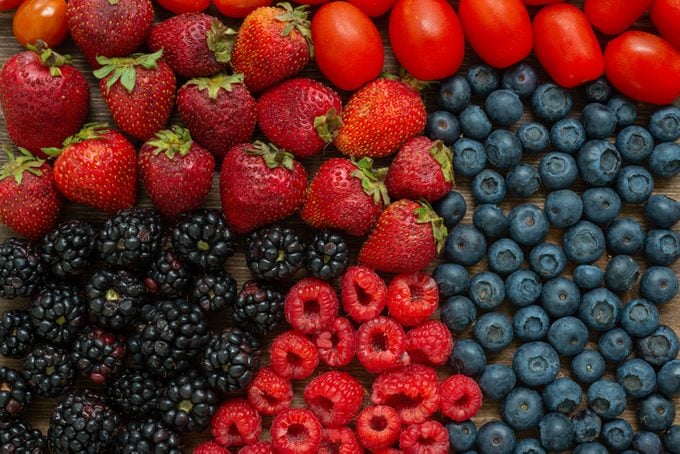This Beloved Superfruit Was Just Named One of the “Dirtiest” Groceries
Updated: Apr. 05, 2023

Always wash your produce, people!
We all know we need the vitamins from fruits and vegetables to reach optimal health. But it’s also no secret that those fruits and vegetables are often treated with pesticides, genetically modified or otherwise processed in ways that can be dangerous.
The Environmental Working Group (EWG), a nonprofit that studies the use of chemicals in agriculture, updates its “Dirty Dozen” list each year to call out the fruits and vegetables that are grown with the most pesticide use. And this year, a fruit usually touted for its myriad nutritional benefits was just added to the list for 2023.
What is the Dirty Dozen?
The Dirty Dozen is a list of 12 non-organic (conventionally grown) fruits and vegetables which were grown with the highest amounts of pesticides. The EWG also releases a list of the least pesticide-ridden fruits and vegetables, known as the Clean Fifteen. These lists are updated yearly, based on the results of annual testing done by numerous federal agencies.
In 2023, the EWG utilized data from over 46,000 samples of 46 fruits and vegetables, investigating 251 different pesticides to update its list.
What fruit was just added to the Dirty Dozen?

The most notable addition this year is blueberries, which came in at #11. Scientists traced 54 pesticides to the superfruit, with nearly 80% of samples showing the presence of two or more pesticides.
The most concerning pesticides detected are phosmet and malathion, both of which were detected in about 10% of the samples. Both are dangerous to the human nervous system; malathion in particular has been classified as “probably carcinogenic” by the International Agency for Research on Cancer.
What other foods are a part of the Dirty Dozen?
This year, green beans were also added to the Dirty Dozen. Seventy percent of green bean samples contained two or more pesticides, for a combined presence of 84 different pesticide varieties. Six percent showed residual acephate, whose use on green beans was banned by the Environmental Protection Agency 10 years ago.
The full 2023 Dirty Dozen list is below. Fruits and vegetables are ranked from the highest amounts of toxic pesticides found to the lowest.
- Strawberries
- Spinach
- Kale, collards and mustard greens
- Peaches
- Pears
- Nectarines
- Apples
- Grapes
- Bell and Hot Peppers
- Cherries
- Blueberries
- Green beans
How dangerous are pesticides?
Pesticides are essentially toxic—they were developed to kill insects, plants, fungi and anything else considered to be a “pest.” Some of the pesticides detected in the Dirty Dozen have been banned in the United States or in Europe because of their potential health risks. These can include heightened risks of cancer, hormone disruption, and brain and nervous system issues, according to independent scientists, government agencies and physicians.
It is worth noting that the amount of pesticide residue found on produce typically falls below the legal requirements. However, this does not make them safe! Children with developing brains are particularly vulnerable to pesticide exposure, as EWG found in 2020 that the EPA failed to adequately consider children when setting the legal limits for 90% of the most common pesticides in the United States.
What can I do to reduce pesticides on these foods?
How you wash your produce matters, and fortunately, the FDA has outlined the perfect guide. Be sure to follow the below steps in order for the cleanest fruits and vegetables.
- Wash your hands with warm water and soap for 20 seconds.
- Cut off any bruised or damaged spots.
- Gently rub the produce under plain running water. According to the FDA, you do not need to use a produce wash or soap. If you are washing a firm fruit or vegetable, use a clean produce brush.
- Dry the produce with a clean towel.
- Peel the vegetable, or remove the outermost leaves, if it is cruciferous.
- Wash your hands again, as before.
Get The Healthy @Reader’s Digest newsletter and follow The Healthy on Facebook, Instagram, and Twitter. Keep reading:














